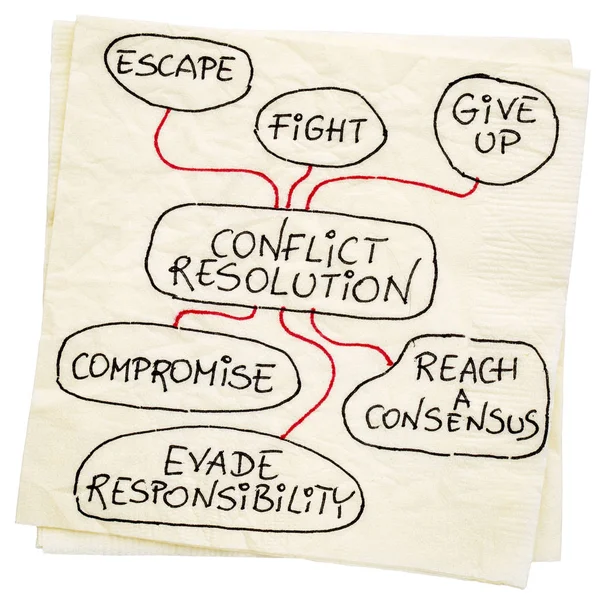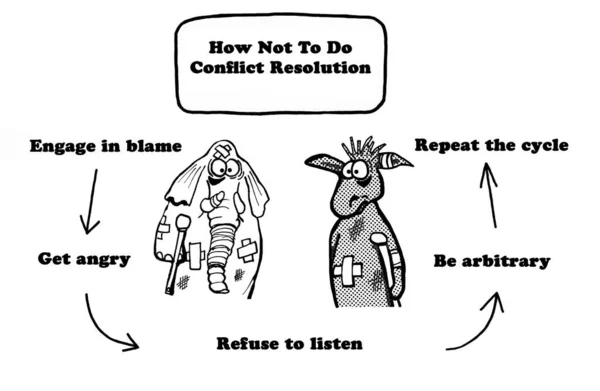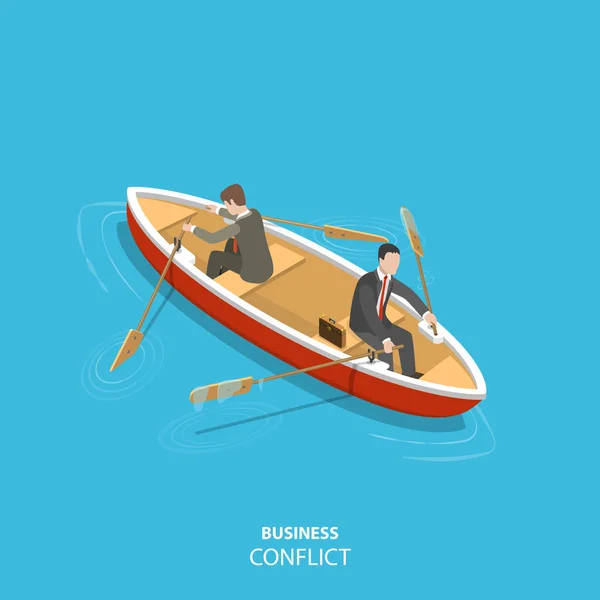Are you facing challenges in navigating conflict resolution at your workplace? You’re not alone. With the evolving dynamics of today’s work environment, particularly for Gen Z and young professionals, mastering conflict resolution is essential.
As the newest generation to enter the corporate world, Gen Z brings unique perspectives, values, and strengths—such as inclusivity, collaboration, and digital fluency. However, these attributes also necessitate the development of interpersonal skills to thrive in diverse settings.
This blog gives you 10 best strategies for conflict resolution. The resource will help to understand and effectively resolve workplace conflicts, ensuring you build positive relationships and advance your career.
Table of Contents
Understanding Gen Z and Workplace Challenges
Gen Z individuals often prioritize open communication, collaboration, and work-life balance. Yet, their assertive communication style can sometimes lead to misunderstandings and conflicts with colleagues from different generations. Additionally, the fast-paced, technology-driven work environment presents unique stressors, including heavy workloads and the challenges of remote work.
Common Workplace Challenges for Gen Z
- Generational Differences: Conflicts may arise from differing communication styles, work ethics, and expectations between Gen Z and older generations.
- Work-Life Balance: Striking a healthy balance can be tough, especially in demanding roles that blur personal and professional lines.
- Diversity and Inclusion: Building an inclusive workplace where everyone feels valued is essential but can be complicated.
- Technology-Related Issues: Navigating digital tools and platforms can sometimes create frustration and conflict.
- Feedback and Criticism: Newcomers may find it challenging to handle constructive feedback without feeling discouraged.
Effective Conflict Resolution Strategies
1. Active Listening
Active listening is one of the most powerful tools in resolving workplace conflicts. When someone is expressing their concerns or viewpoints, giving them your undivided attention not only fosters respect but also demonstrates your genuine interest in understanding their perspective. It’s more than just hearing words—active listening involves processing and acknowledging the emotions, body language, and underlying concerns that might not be explicitly stated.
Once the other person has finished speaking, paraphrasing what you’ve heard helps ensure that you’ve correctly understood their message. Phrases like, “What I hear you saying is…” or “It sounds like you’re feeling…” can be used to reflect back their sentiments. This reinforces that you are engaged in the conversation, building rapport and mutual respect. Beyond that, empathizing with their feelings—imagining yourself in their situation—helps bridge emotional gaps. By acknowledging their emotions, you create a foundation for constructive problem-solving.
2. Open Communication

Open communication is essential in preventing misunderstandings that often lead to conflicts. This involves being transparent and direct when expressing your thoughts, emotions, and concerns. Clarity in communication ensures that both parties are on the same page, reducing the risk of assumptions or misinterpretations that can fuel disagreements.
Using “I” statements is a particularly effective technique for communicating feelings without placing blame. For instance, saying “I feel stressed when deadlines aren’t met” focuses on your experience, rather than accusing the other person, which would likely lead to defensiveness. These statements shift the conversation away from blame and toward problem-solving.
Moreover, it’s critical to avoid personal accusations. Concentrating on the issue at hand instead of criticizing the person keeps the discussion productive. For example, rather than saying, “You never listen to me,” which attacks the individual, say, “I feel unheard when our discussions don’t lead to solutions.” This approach maintains a respectful tone and keeps the focus on resolving the problem.
3. Assertiveness
Assertiveness is key to communicating your needs and maintaining boundaries without being confrontational. In many conflicts, issues arise because one party feels that their needs are not being respected or acknowledged. By being assertive, you can stand up for your rights while still respecting others’ opinions and perspectives.
Effective assertiveness involves expressing your views clearly and confidently without aggression. This approach allows you to address your needs directly—whether it’s requesting more time to complete a task or setting boundaries for respectful communication. For instance, instead of letting frustrations build up, assertiveness enables you to say, “I need clear deadlines to manage my workload efficiently.”
Respectful assertiveness also keeps the conversation solution-focused, encouraging open dialogue rather than escalating tensions. By maintaining a calm demeanor, you show that you are willing to engage in a constructive conversation, creating a space where both parties can express their concerns and find a mutually beneficial resolution.
4. Problem-Solving
Effective conflict resolution requires a structured approach to problem-solving. The first step is clearly identifying the problem at hand. Sometimes conflicts arise due to misunderstandings or surface-level issues that mask deeper problems. Defining the root cause of the conflict is essential, as it allows everyone involved to focus on the true issue rather than getting caught up in symptoms of the problem.
Once the issue is identified, collaborative brainstorming becomes critical. Involving all parties in generating potential solutions ensures that everyone feels heard and valued. Encouraging participation in this process helps build ownership of the solution, which increases the likelihood of a successful resolution.
After gathering ideas, it’s essential to evaluate each option. Analyzing the pros and cons of potential solutions enables both parties to weigh the impacts and benefits of each idea. This evaluation should be done openly, where both sides can express their concerns and preferences. Ultimately, the goal is to reach a mutually agreeable solution that addresses the needs of all involved and strengthens team relationships.
5. Building Relationships

Strong relationships in the workplace are fundamental to conflict prevention and resolution. When colleagues trust each other, it’s easier to resolve conflicts before they escalate. Trust is built through reliability—being consistent in your actions and words, being honest, and offering support when needed.
Practicing empathy is a crucial element of building strong relationships. Empathy involves not just understanding someone else’s perspective but also validating their feelings. Even if you don’t agree with their viewpoint, showing that you acknowledge and respect their emotions can create a more supportive and understanding environment. Empathy fosters patience and openness, allowing conflicts to be resolved with compassion rather than hostility.
Additionally, seeking common ground by identifying shared values and goals can strengthen relationships and foster a cooperative atmosphere. When team members recognize that they are working toward the same objectives, it becomes easier to resolve conflicts with the shared understanding that everyone’s success is interconnected.
6. Seeking Help
In some situations, conflicts may escalate to a point where internal resolution efforts are not enough. Recognizing when to seek help is a vital skill in conflict management. Resources such as conflict resolution training, mediation services, or human resources support are valuable tools that can facilitate the resolution process.
Enlisting the help of a neutral third party, such as a mediator, can be particularly effective when conflicts have become highly charged or when there is a significant power imbalance between the parties involved. A mediator brings an unbiased perspective to the conversation, helping to de-escalate emotions and guiding both parties toward a fair resolution. Mediators are skilled in creating an environment where open dialogue can take place, ensuring that all voices are heard and respected.
Furthermore, conflict resolution training can provide team members with the skills needed to prevent conflicts from escalating in the future. Training programs often focus on communication techniques, emotional intelligence, and collaborative problem-solving, equipping employees with the tools to handle disagreements constructively.
7. Emotional Intelligence
As Gen Z professionals navigate workplace complexities, developing emotional intelligence becomes a crucial skill for effective conflict resolution. Emotional intelligence involves the ability to understand and manage both your own emotions and those of others. This self-regulation is particularly important during conflicts, as it helps prevent impulsive reactions that could escalate tensions.
Emotional intelligence also improves empathy, allowing you to better understand the feelings and motivations of your colleagues. When you’re in tune with how others are feeling, you can approach conflicts with greater sensitivity and diplomacy. As a result, conflicts become less about personal attacks and more about addressing the underlying issues constructively.
Incorporating emotional intelligence into your conflict resolution approach builds trust within the team, as colleagues feel respected and heard, making it easier to find mutually agreeable solutions.
8. Self-Awareness
Practicing self-awareness is essential for effective communication and conflict resolution. It allows you to reflect on your own behaviors and attitudes, helping you identify patterns that may contribute to conflicts. Self-awareness helps you recognize moments when your actions might unintentionally provoke others or when personal biases cloud your judgment.
By regularly engaging in self-reflection, you become more mindful of how your communication style influences workplace dynamics. This increased awareness gives you the ability to adjust your behavior before tensions arise, contributing to a more harmonious work environment.
Furthermore, self-awareness promotes personal growth. Once you identify areas where your communication could improve, you can actively work on refining those aspects, ultimately enhancing your relationships with colleagues and minimizing future conflicts.
9. Resilience

Building resilience is essential for bouncing back from workplace challenges and setbacks. Conflict resolution often requires mental toughness, as resolving disputes can be emotionally taxing. Resilient individuals possess the ability to remain calm under pressure, approach difficult conversations with a positive mindset, and recover quickly after stressful situations.
Rather than viewing conflicts as roadblocks, resilience allows you to see them as opportunities for growth. Each conflict presents a chance to learn new negotiation techniques, understand differing perspectives, and strengthen your interpersonal skills. This mindset shift transforms conflicts into constructive experiences, ultimately benefiting both personal and professional development.
Moreover, resilience helps you maintain a positive attitude and perseverance when conflicts seem difficult to resolve, encouraging a collaborative rather than combative atmosphere.
10. Mentorship
Seeking mentorship can provide invaluable guidance in navigating workplace dynamics and developing effective conflict resolution strategies. Mentors, who have likely encountered a range of workplace challenges throughout their careers, can offer unique perspectives on how to handle various situations.
Mentorship also serves as a source of emotional support. During particularly challenging conflicts, having someone to confide in can ease stress and provide clarity on how to approach the situation. Mentors may share stories of how they’ve resolved conflicts in the past, offering practical tips or methods that you can apply in your own professional life.
Additionally, mentors often act as sounding boards, giving constructive feedback on how you handle conflicts and suggesting areas for improvement. This kind of personalized guidance is instrumental in building your conflict resolution toolkit and boosting your confidence in dealing with workplace disputes.
11. Embracing Diversity
Embracing diversity is another key strategy for enhancing workplace conflict resolution. Valuing different perspectives not only enriches the work culture but also broadens the range of solutions available when conflicts arise. Diverse teams with intersectionality bring varied life experiences, cultural backgrounds, and thought processes, which can lead to innovative approaches to problem-solving.
In inclusive environments, all voices are heard and respected, fostering open communication and collaboration. When everyone’s perspective is considered, conflicts are more likely to be addressed in a way that takes multiple viewpoints into account, creating fair and balanced outcomes. This inclusivity often results in more creative and long-lasting solutions to workplace challenges.
Furthermore, embracing diversity helps prevent misunderstandings that might stem from cultural differences. Being mindful of how diverse backgrounds influence communication styles can help you approach conflicts with greater cultural sensitivity, leading to more respectful and effective resolutions.
In Conclusion
By applying these strategies, individuals can approach workplace conflicts with a mindset that promotes understanding, collaboration, and long-term solutions. Whether through active listening, assertiveness, or seeking outside help, these methods contribute to a healthier and more productive work environment.
If you found these conflict resolution strategies helpful, we’d love to hear your thoughts! Share your experiences in the comments below, give this post a like, and don’t forget to share it with your network.



